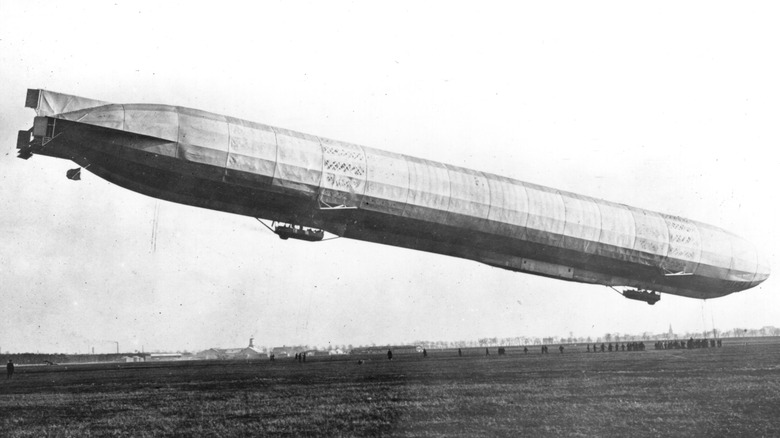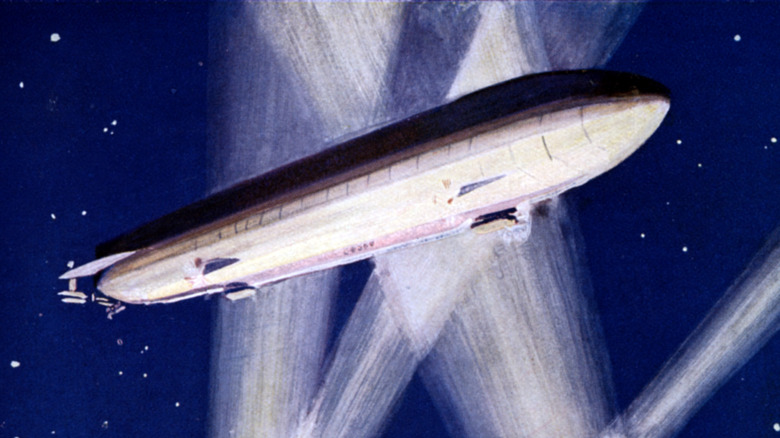The Bizarre Reason WWI's Zeppelin Bombings Popularized Pajamas
Count Ferdinand von Zeppelin was just 25 when in 1863 he found himself in the United States, then in the midst of the Civil War. As with many officers of other European nations, he was sent by the Prussian government as a military observer. He documented what he was tasked with, but a facet of the war that captured Zeppelin's imagination was the observation balloons used by the Union army (via Britannica). Where the American contraption he had seen was a relatively simple balloon tethered to the ground, he envisioned powered flight.
Over the following decades, he developed the concept, even leaving the army to do so until in 1900 he had his first successful flight. While its use of explosive hydrogen led to its demise as a weapon of war in 1917 and as a mode of civil transportation in 1937, the "Zeppelin" inspired hope and fear in many (and a legal battle between Von Zeppelin's descendants and the band Led Zeppelin). What couldn't have been known by Hindenburg or the Germans that used his invention against Britain, is that the bombs they dropped during World War I set a fashion trend that persists to this day; pajamas.
During Zeppelin raids, presentation was often on the mind
In the early years of World War I, Zeppelin air raids over Britain saw relative success, as the incendiary bullets and fighter aircraft which doomed them were not yet commonplace. While only 557 people in total died from the raids, their initial invulnerability left the British public terrified. As an island, the wars of continental Europe seldom reached their shores, and now their own homes were at risk of being destroyed by the enemy. As The Atlantic reports, this forced them to abandon their homes for shelter once the alarm was raised, leaving their previously private attire exposed to their neighbors.
Pajamas presented a more practical and fashionable form of nightwear for both men and women, as the pockets and thicker material were more useful than the thin fabric of more conventional nightclothes (via BBC). According to Oxford, pajamas (as well as the work clothes women in factories often used) also upended views on women wearing pants; something that before the war would have been shunned. Both two-piece and onesie-like outfits were commonplace during the war, and while they somewhat fell out of favor afterward, the standard for what we wear to bed had been set.

